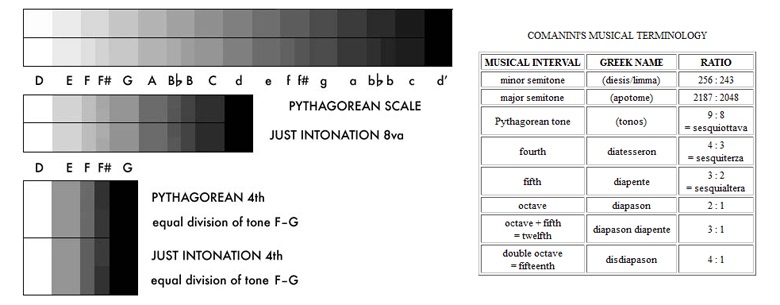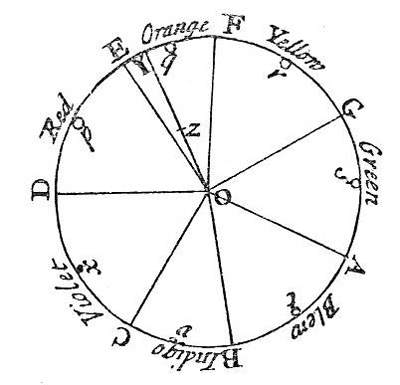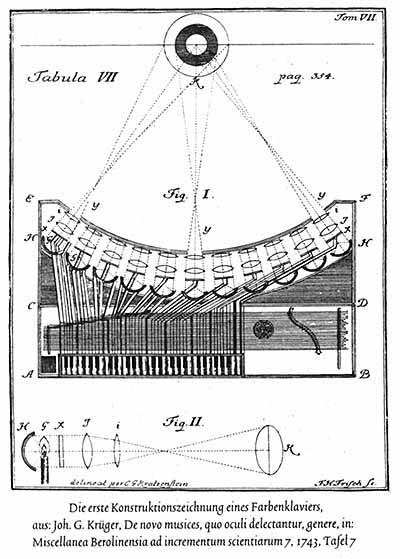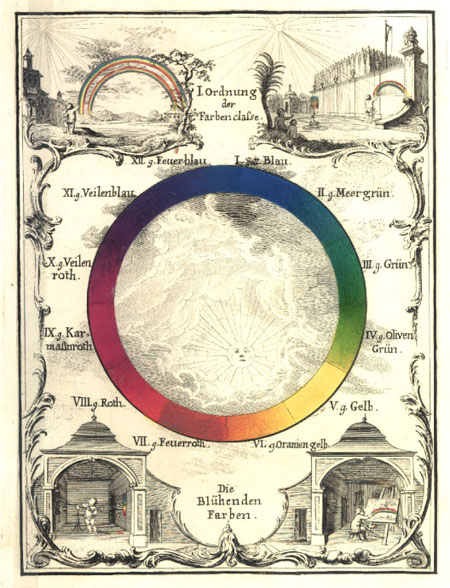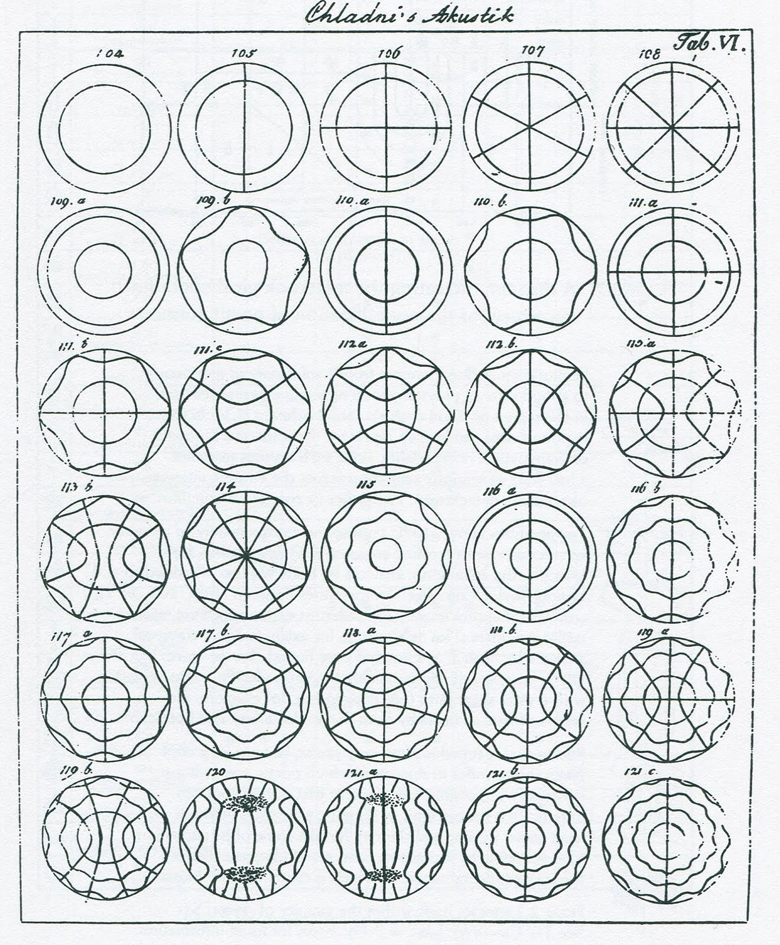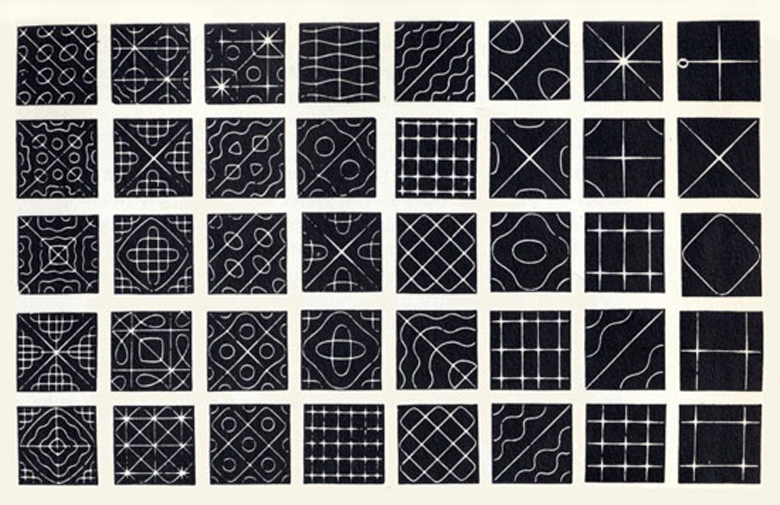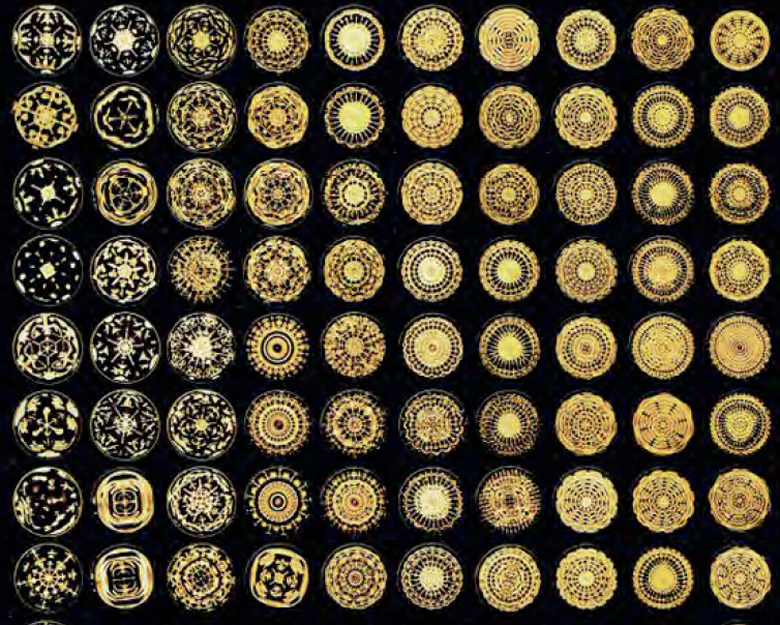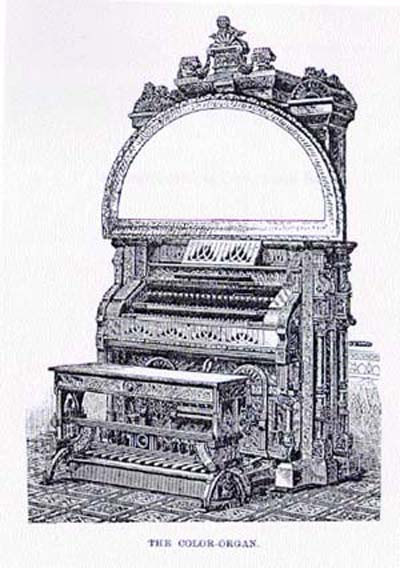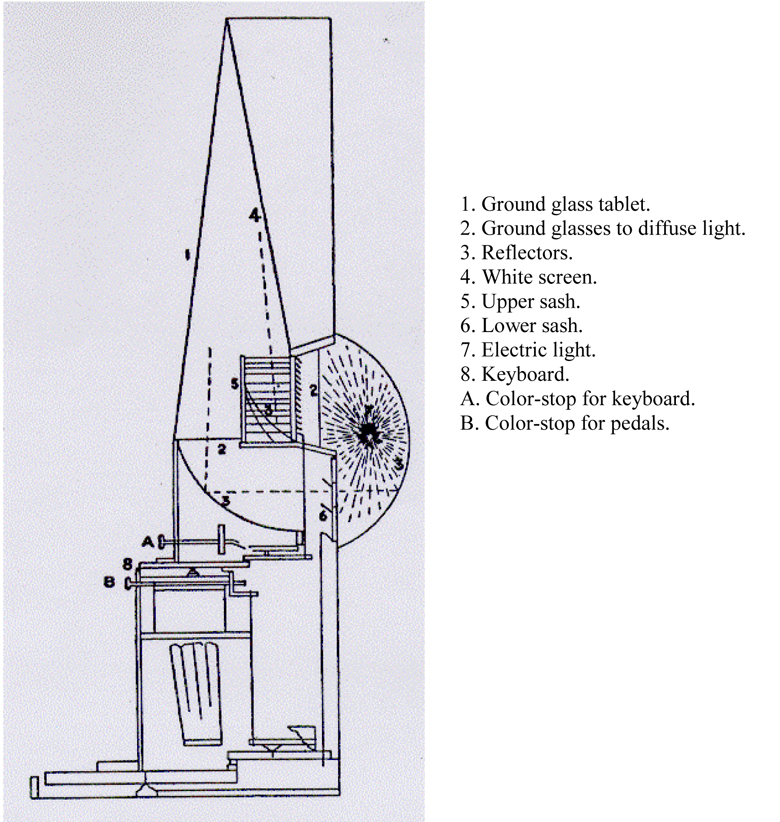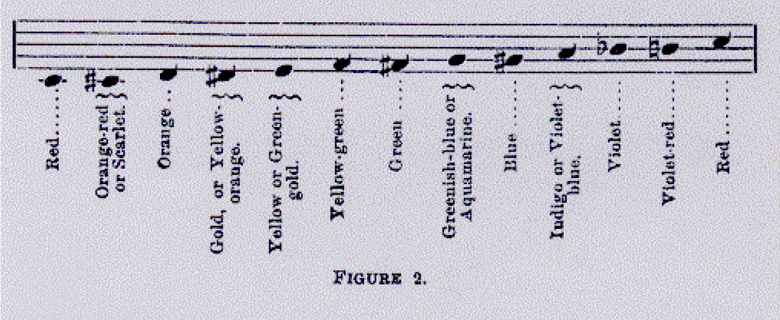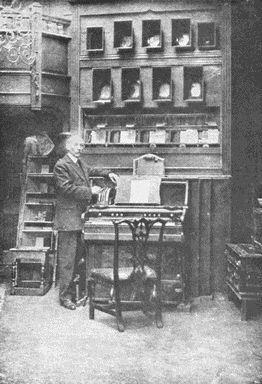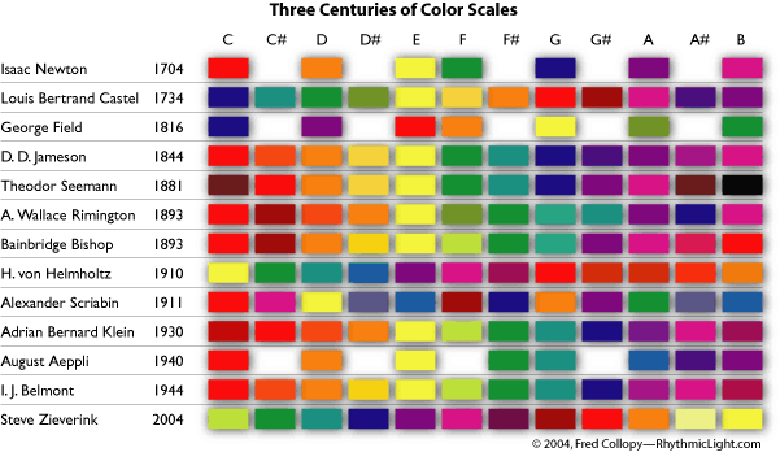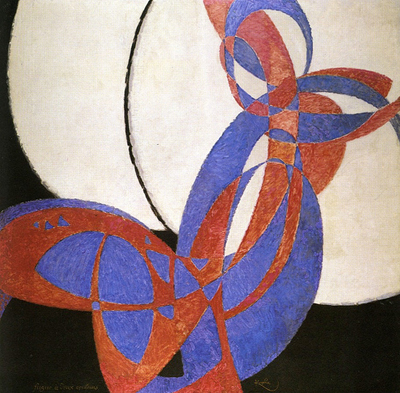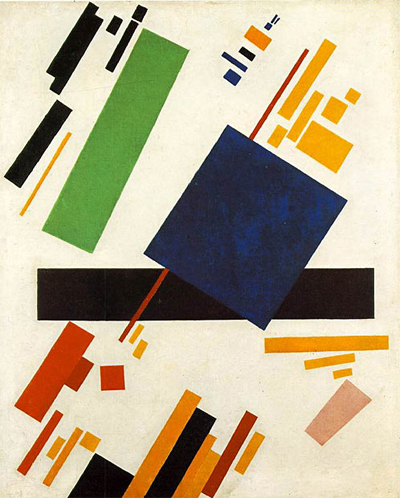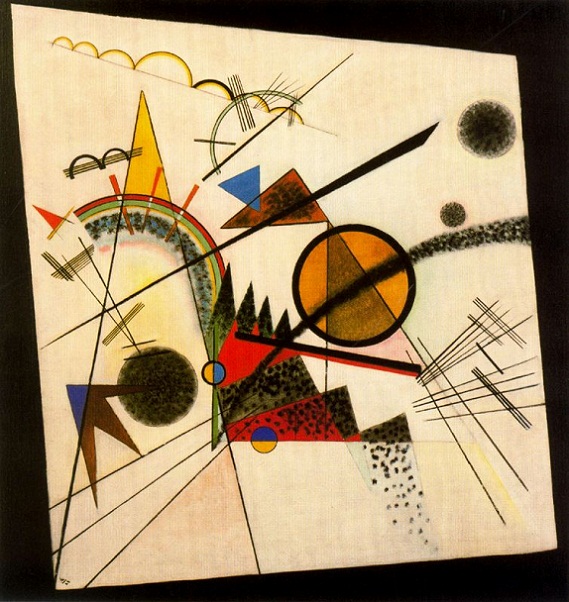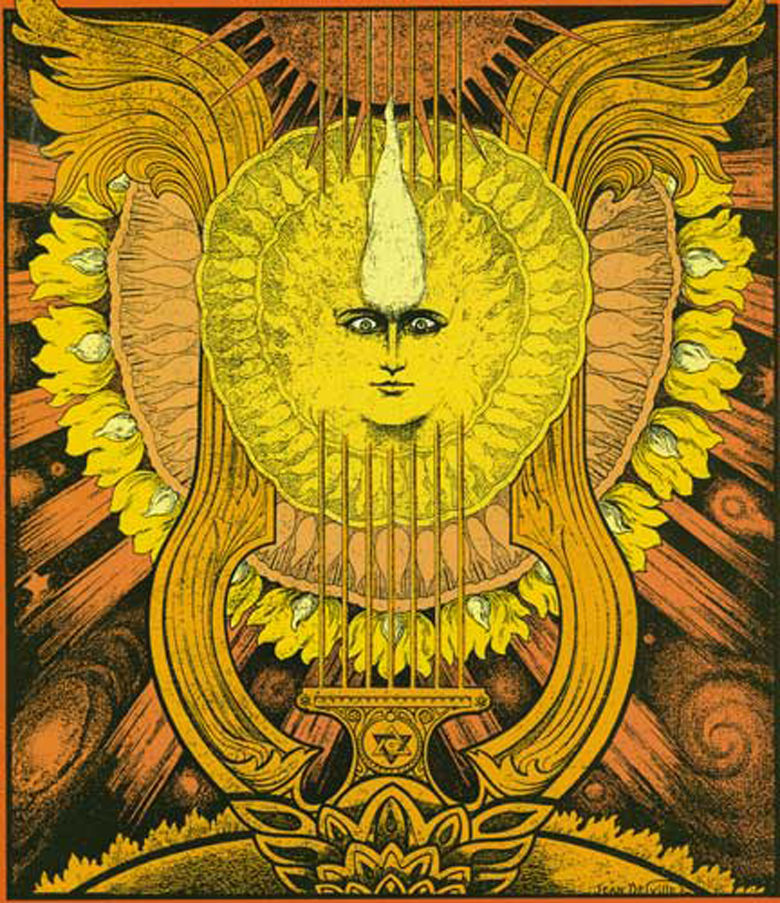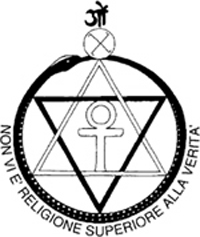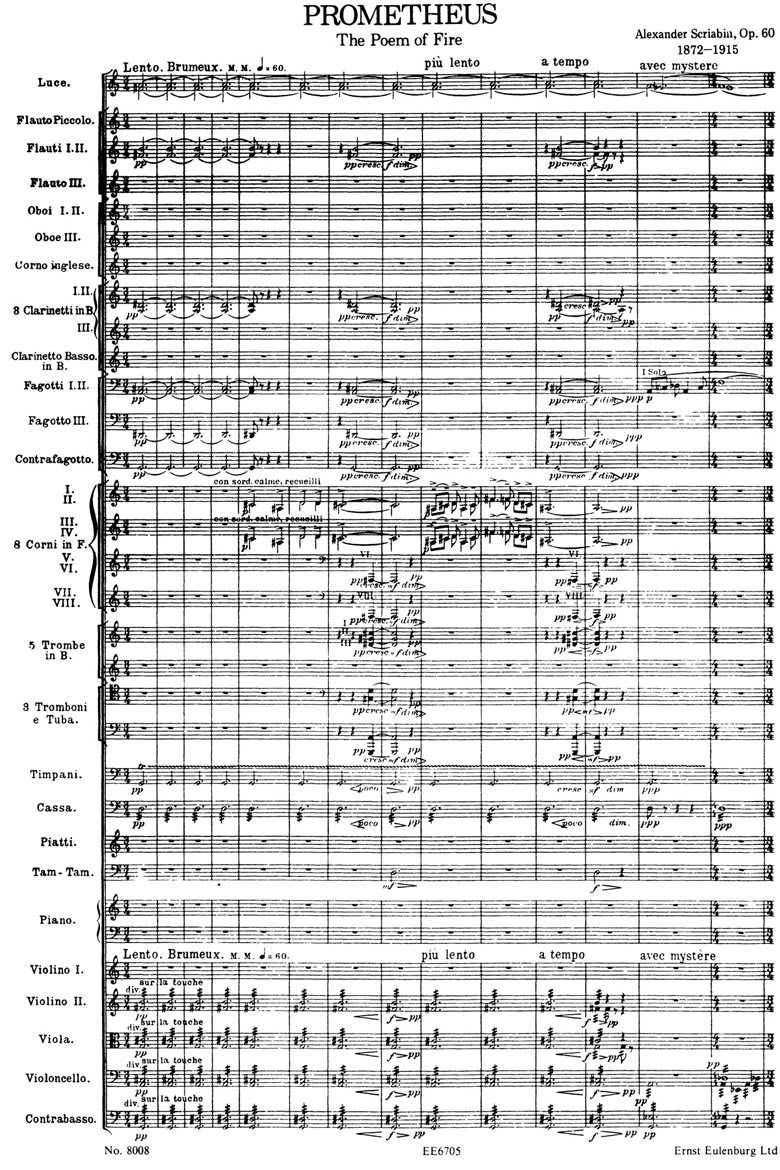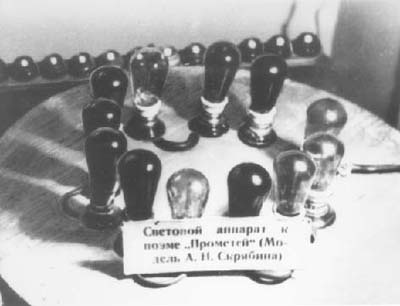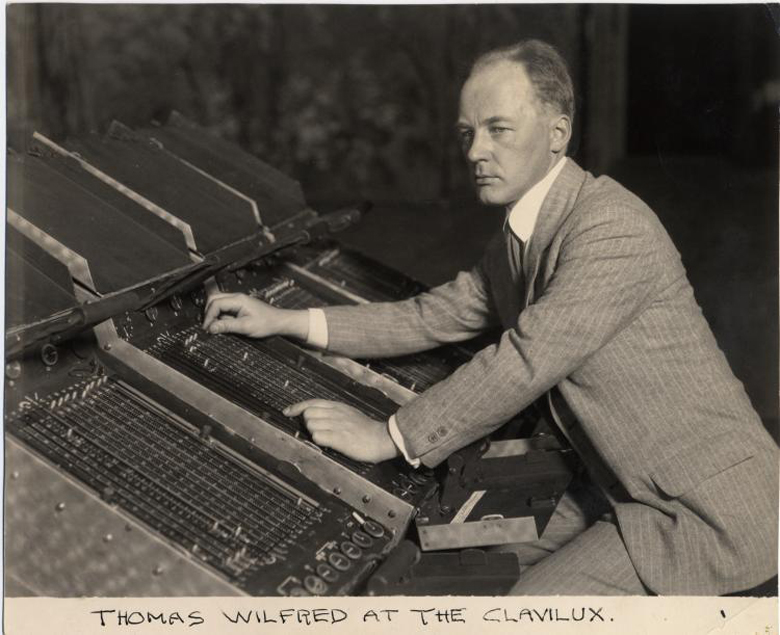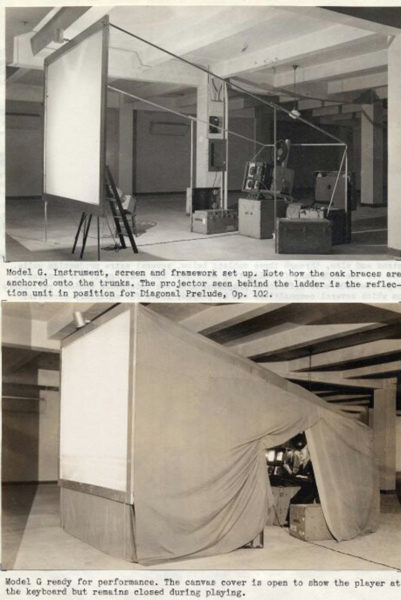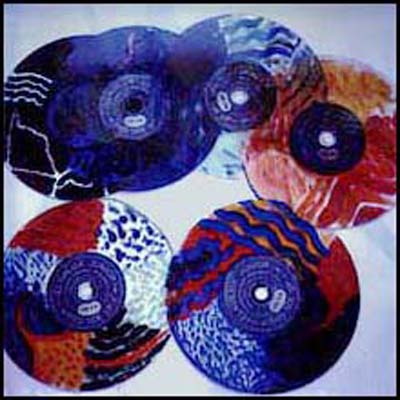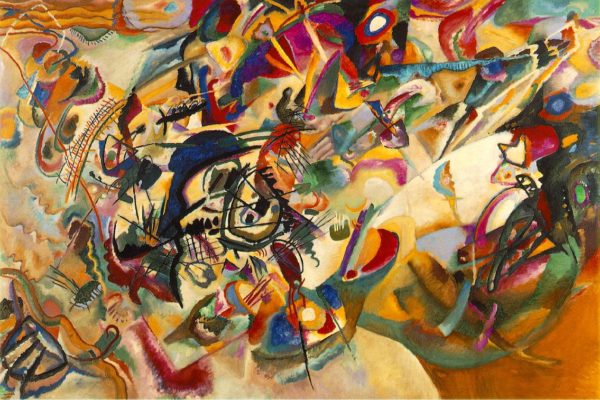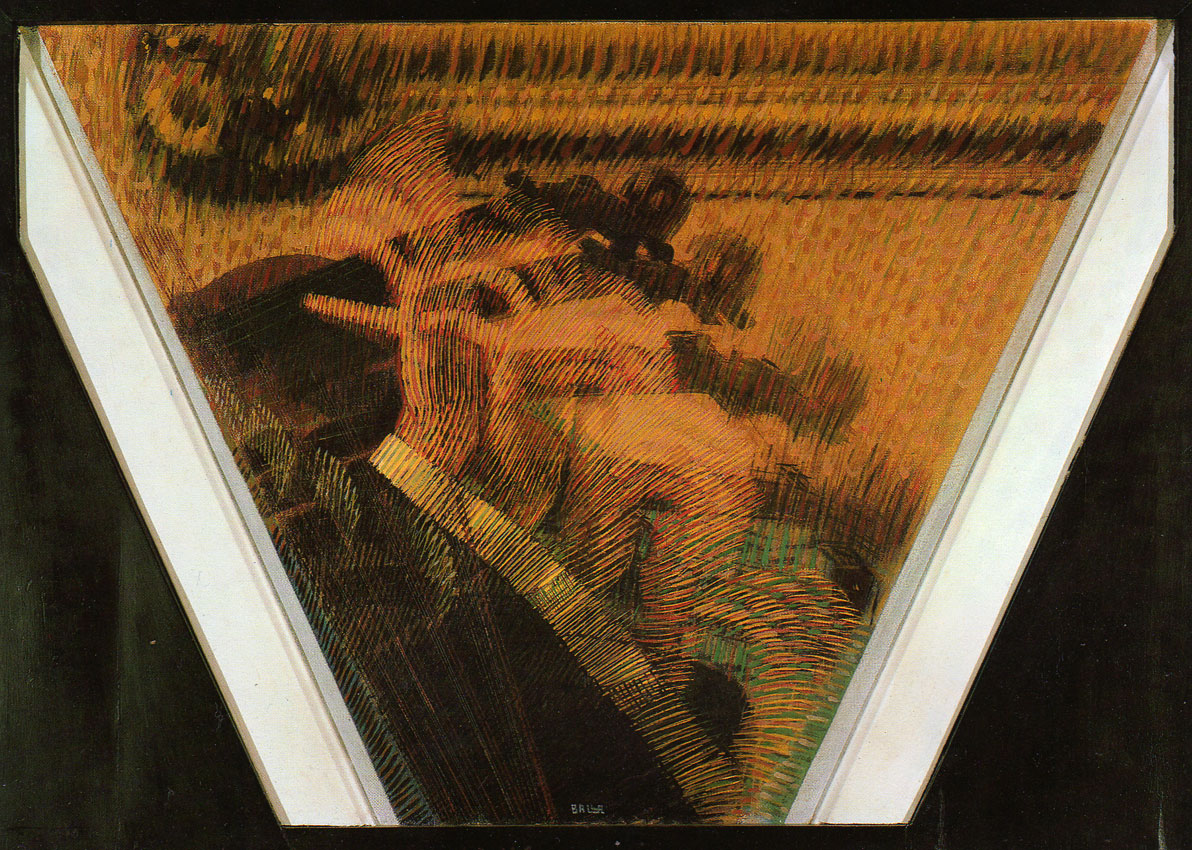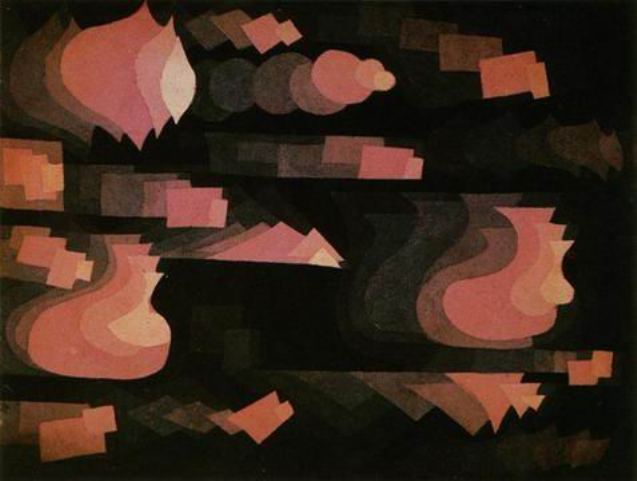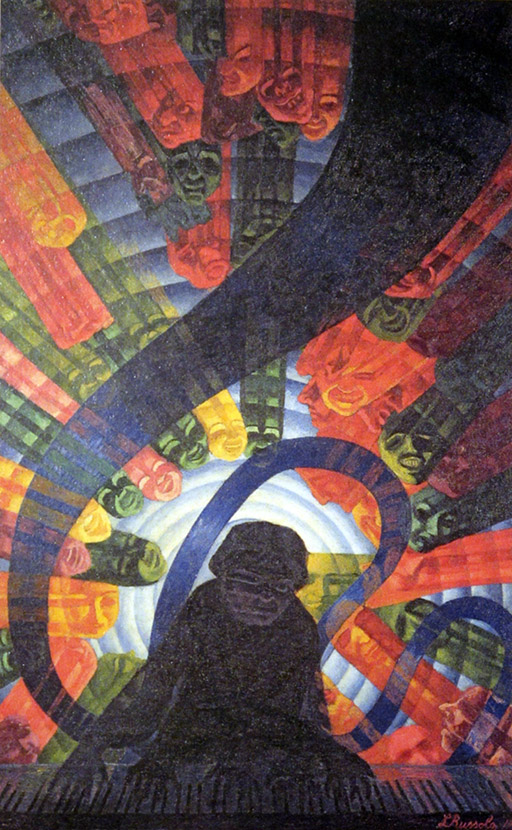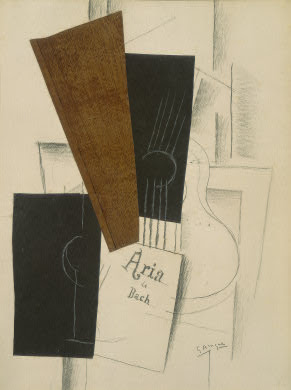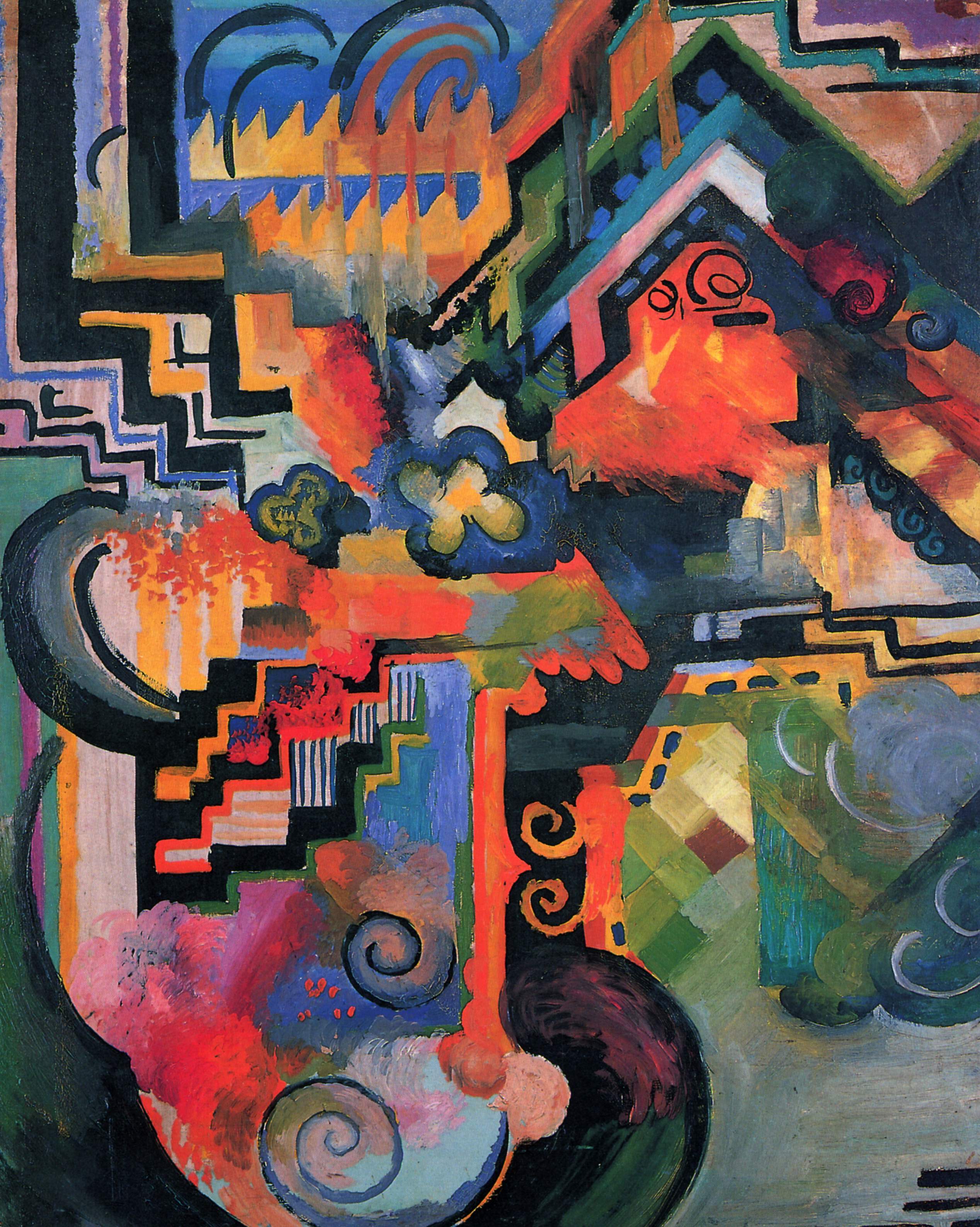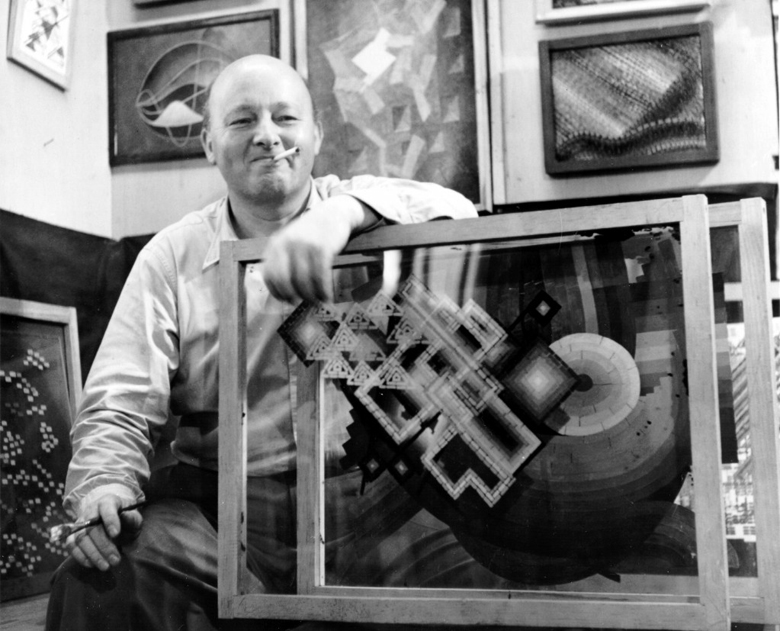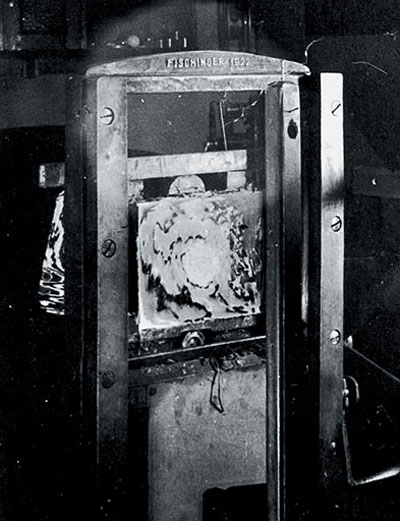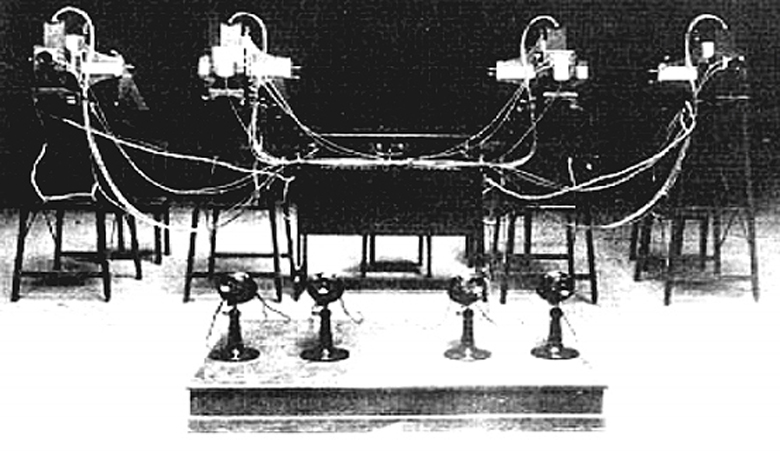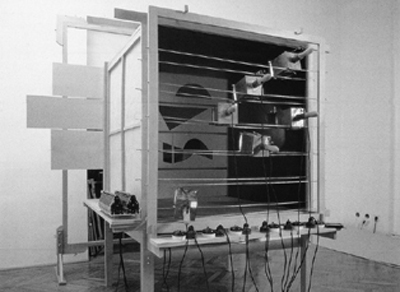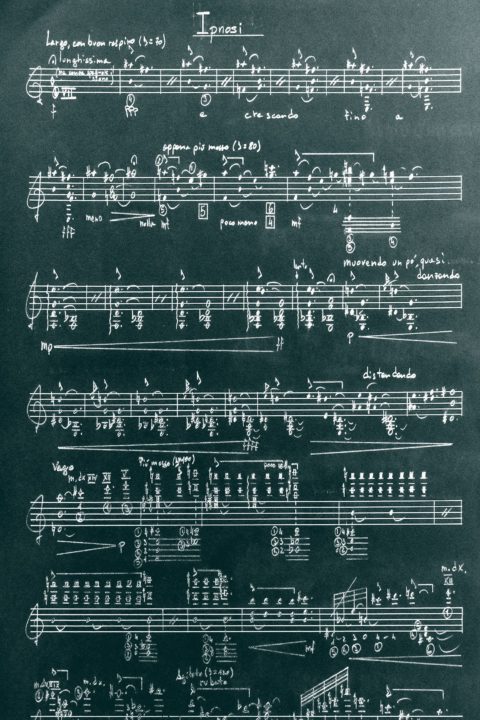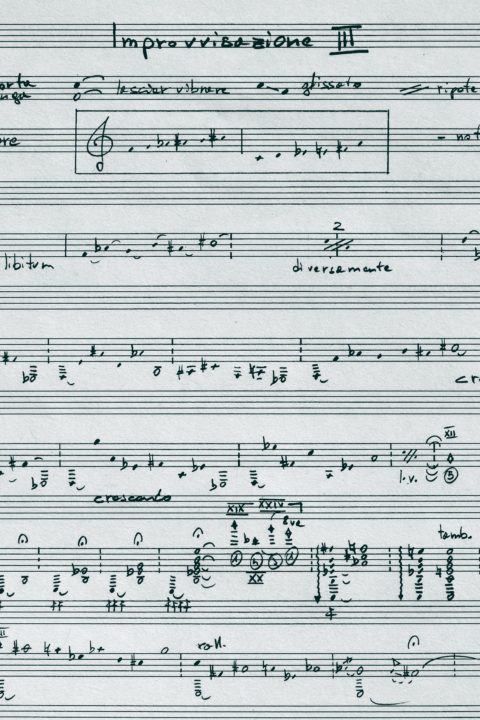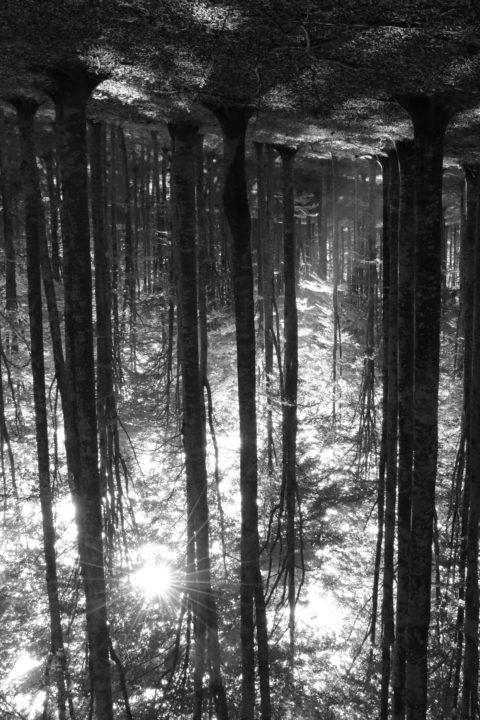A HISTORICAL PERSPECTIVE ON THE RELATIONSHIP BETWEEN SOUND AND COLOUR

ABOUT COMPOSITION
17 October 2013
9 genuary 2018
ALBERTO MESIRCA | KCOR
9 January 2018A historical perspective on the relationship between sound and color, from newton to the XXI century.
Lecture in Berlin, 10 November 2012, International Guitar Accademy
“If we were able to observe the air during a concert,while it vibrates simultaneously with the voices and instruments,we would be amazed at the colors organized and moving within it.”
In the history of culture, only a few phenomena have had the capacity to attract and involve artists and musicians as well as scientists and philosophers like that of the relationship between sound and color. And when we talk about it we refer, without wanting, to the phenomenon called SYNESTHESIA: from the greek συν-αισθάνομαι: perceiving together. One first sees an interest in synesthesia at the beginning of the XIX century when it was initially considered to be a poetic expedient or as a figment of imagination. It was only in the period between 1870 and 1880 that careful studies legitimized this psychological phenomenon and were soon followed by the introduction of the word “synesthesia”. But we would have to wait until 1980 before that neurophysiological studies would carried out on synesthetic subjects. These studies showed that during synesthetic experiences, the brain simultaneously activates different sensory areas, and modern techniques of functional neuroimaging demonstrate that. So, what happens is that, for example, the areas used for auditory perception are simultaneously activated with visual or olfactory areas, allowing a kind of double perception of the stimulus normally perceived and analyzed by only one sense. This cross-activation of the areas of the sensory cortex, which in most of us function independently, may be based on an excess of anatomical neural connections between different areas. There is some confirmation that this hyperconnectivity is also present in primates and in other mammals during the fetal period, and some studies indicate that babies’ senses aren’t well differentiated, but mixed them in a synaesthetic confusion. This sort of confusion comes to an and at around the age of three months. A clearer separation of the senses can be seen with the cortical maturation, which makes the appropriate combination of different perceptions possible. So, one thinks that, in individuals with synesthesia, a genetic disorder prevents complete cancellation of hyperconnectivity, so that a more or less conspicuous part of it remains in adulthood.
Despite the fact that today it is possible to define the synesthetic phenomenon through a precise scientific protocol, by accurate testing, whether obtained through the use of very advanced technological equipment, or through targeted and specific psychological analysis, this concept has always aroused interest in artists. We reminded of, for example, in field of poetry, Keats and Schelley who, in the early nineteenth century, often used metaphors and intersensorial images as well as Rimbaud and the Symbolist poets who, at the end of the nineteenth century, combined visual images and sound images or olfactory feelings. However, the most interesting artistic research, concerns the relationship between sound and color and the results obtained in music and painting. During the twentieth century, many artists have investigated the possibility of creating relationships between these two forms of expression. From the abstractionism of Klee and Kandinsky to the futurism of Pratella, Carra, and Russolo, via the cubism of Picasso and Braque, arriving, after the experiences of Bauhaus, at the avant-garde art of the mid twentieth century with Schoeffer’s cybernetic art and Fischinger’s abstract film, there are countless works that reserch a deep connection between these two worlds of expression. Their artistic manifestos are equaly important to properly understanding this phenomenon as were the music contributions of Scriabin, Rimsky-Korsakov, Schoenberg, Webern, Milhaud, Stravinsky and Xenakis.
Now let’s try to draw a line that helps us to follow the steps taken in reserching relationships and methods approaching visual and sounds arts.
The general idea that the universe is made by laws that are constantly repeated in all different physical phenomena, had a considerable importance in the development of theories about the relationship between sound and color. The ancient Greeks were the first to construct a color scale divided into seven parts, in analogy with the seven notes of the musical scale and the seven known planets and the Aristotelian theory of color was considered valid until the XVII century.
The first artist in history to study in the relationship between sound and color was Giuseppe Arcimboldi. (Painter (Milan 1527 – 1593). He first had worked in Milan and then as court painter in Prague, for the emperors Ferdinand I, Maximilian II and Rudolf II.) Through the work of Don Gregorio Comanini (Italian poet and historian 1550 – 1609) we are aware of Arcimboldo’s scientific work. Arcimboldo used the pythagorean harmonic proportions of tones and semitones as his starting point which he subsequently translated into their corresponding color values, using both his artistic instinct and a scientific method. The painter, in creating of a special grayscale, managed to correlate the relationships between the musical scale and brightness of colors. With this system he was also able to divide the semitone into two equal parts, conceptually anticipating the arrival of the tempered scale by 150 years. “This extremely inventive painter, wrote Comanini, knew not only how to find the relevant semitones, both small and large, in his colours, but also how to divide a tone into two equal parts; very gently and softly he would gradually turn white into black, increasing the amount of blackness, in the same way that one would start with a deep, heavy note and then ascend to the high and finally the very high ones”. In this way, step by step, starting from the purest white and adding more and more black, he managed to render an octave in twelve semitones, with the colours ranging from a deep white to a high black. He then did the same for a range of two octaves. “Just as he would gradually darken the color white and use black for indicating heights, he did the same with yellow and all the other colours, using white for the lowest notes that one could sing, then green and blue for the middle ones, then brightly glowing colours and dark brown for the highest notes: this was possible because one colour really merges into another and follows it like a shadow. White is followed by yellow, yellow by green, and green by blue, blue by purple and purple by a glowing red; just as tenor follows bass, alto follows tenor and canto follows alto”. This account of Gregorio Comanini probably only describes the beginning of Arcimboldo’s research. As the artist himself did not leave any notes, we can only speculate that he intended to extend the system along the lines of a theory of perception.
Nearly fifty years later, Athanasius Kircher drew up complex tables of analogies, among other things associating musical notes, colours, intensities of light and degrees of brightness in relation to eachother (Ars magna lucis et umbrae, 1646). Four years later, in Musurgia universalis (1650) he devised a system associating colours with intervals.
In the XVII century, analysing the spectrum of light, Newton correlated musical notes with colors through a direct analogy between acoustic and optical phenomena, suggesting a close correspondence between the seven colors of the rainbow and the seven notes of the musical scale. An increase of the oscillation frequencies of light in the color spectrum from red to violet, made a corresponding increase in the frequency of oscillation of sound in the diatonic major scale. Newton wrote:
“The rectilinear sides MG and FA are divided by vertical lines in the same way of musical notes. Let’s start to consider GM in relation to X and MX to be equal to GM, and therefore GX, λX, ιX, ηX, εX, γX, αX, MX, to be in proportion to one another like the numbers, 1, 8/9, 5/6, 3/4, 2/3, 3/5, 9/16, 1/2. In this way we can represent the Chords of the Key, Tone, Minor Third, Fourth, Fifth, Major Sixth, Seventh and Eighth above that Key and, in the same time, the intervals Mα, αγ, γε, εη, ηι, ιλ, and λG, will represent the spaces taken up by the respective colours (red, orange, yellow, green, blue, indigo, violet)”.
French philosopher and mathematician, Father Louis-Bertrand Castel (1688-1757), made a practical realization of Newton’s ideas. He knew the colour theories of his day, the writings of antiquity and those of the 16th- and 17th-century theorists. He adopted the colour theories of dyers and painters, rejecting those based on Newtonian physics. He simplified the relationship between colours and tonal intervals to a relationship between colours and notes, liberated it from its cosmological context, and at the same time attempted to transfer it to art as Farbenmusik (‘colour music’). Father Castel wasn’t motivated only by factors of a speculative science, but also by ethical and practical purposes. This gave birth to the idea of building a musical instrument that could transform the sound into color, not just in order to create a particular art form, but also to enable deaf people “see” the music. Thus over a period of thirty years, through several attempts, he built several models of colored clavichord “Clavecin Oculaire” or “Clavecin pour les yeux, avec l’art de peindre les sons, et toutes sortes de pièces de musique” (Harpsichord for eyes, with the art of painting sounds, and all sorts of musical pieces).
The instrument worked in this way: by pressing a button, small panels appeared in a box above the clavichord, showing different pre-set colors, according to a correlation between the musical scale and color spectrum. In other experiments Castel used colored crystals of different sizes. However, the light source available at that time – the candle – wasn’t powerful enough to produce the desired effects. Apart from the technical results obtained, Castel initially worked on matching the colors of the spectrum to the notes of the diatonic scale, starting from Violet for C and ending with Crimson for the high C.
Later, he perfected his system and he proposed a range of twelve colors corresponding to the semitones including the eighth: C-Blue, C #-Veronese Green, D-Green, D #-Olive Green, E-Yellow, F-Aurora, Orange-F #, G-Red, G #-Crimson, A-Violet, A#-Agatha (bluish purple), B-Violet blue. In this way he was able to extend the system to multiple octaves with the simultaneous application of a scale of values based on shade, ensuring the principle of cyclicity (every octave has the same color, that becam lighter and lighter). Castel’s work piqued the interest of contemporary musicians, especially Telemann, who come in contact with a version of this instrument and translated the “Memoire” of the Jesuit into German.
A different aspect of the problem, that is the relationship between sound and form, was handled by the German physicist and musician Ernst Chladni (1756-1827). ). He was the first to realize that sound vibrations interact with matter creating real geometric shapes. By placing sand on a metal or glass, round or square shape, stand which was pivoted on a stem, and makeing it vibrate with a violin bow, Chladni was able to produce sound giving it a dynamic image. Infact Pythagoras had already argued that “” geometry is music solidified”.
So, what can we see in this picture? Primarily, we can see two things: areas that are vibrating and areas that are not. When we make a flat plate of an elastic material vibrate, the plate doesn’t oscillate as a whole. The boundaries between these vibrating parts, which are specific in every particular case, are called node lines and they do not vibrate. The other parts oscillate constantly. Then, if we put sand on this vibrating plate, the sand (black in the illustration) collects on the non-vibrating node lines. The oscillating parts or areas thus become empty. The opposite is true for liquids; that is to say that water collects on the vibrating parts and not on the node lines. Even if the correlation between Chladni’s shapes and a musical performance had, at that time, been technically impossible in real-time, scholars of romantic aesthetics held these figures in high regard, and enthusiastic estimations ware given by scholars such as J.W. Goethe and O. de Balzac.
VIDEO “Chladni Plates”
Thus we can say that Chladni was the father of Cymatics. The term cymatics was coined in 1967 by the Swiss doctor Hans Jenny to refer to the theory that attempts to demonstrate the morphogenetic effect of sound waves (the process that leads to the development of a specific shape or structure). The term cymatics derives from the greek κυματικά that means “the study of waves” (from κΰμα that means “wave surge”). His experiments were similar to those of Chladni. Jenny made use of crystal oscillators and invented a machine called the Tonoscope in order to make these plates and membranes vibrating.
This was a major step forward. The advantage with crystal oscillators is that one can determine exactly which frequency and amplitude/volume one wants. The tonoscope was constructed to make the human voice visible without any electronic apparatus as an intermediate link. This yielded the amazing possibility of being able to see the physical image of the vowel, tone or song a human being produced directly.
VIDEO “Tonoscope”
In his research with the tonoscope, Jenny noticed that when the vowels of the ancient languages of Hebrew and Sanskrit were pronounced, the sand took the shape of the written symbols for these vowels, while our modern languages, on the other hand, did not generate the same result.
Lets make a small digression. We know how almost the whole of cosmogonic tradition trace the emission of sound back to the creation of the universe. The Bible, egyptian tradition, Veda, Rigveda, Upanishad and also the indigenous traditions of the Amazon speak about it. For example the Uitotos say: “At the begining, the Word gave origin to the Father”. In the Upanishad it is said that universe originates from the syllable OM (AUM). So, in his research, Jenny discovered that the sound of Mantra OM, transformed to the Tonoscope, created the same geometric shape of his corresponding Yantra. (Yantra is the substantial geometrical base of everything, like Mantra is their substantial sound. Mantra and Yantra, in indian tradition, are extremely colse). (Photo) Today, the scientists John Stuart Reid and Erik Larson have developed Cymatic studies and they have created another machine called the Cymatoscope, a new version of the old Tonoscope, which is able to give us tridimensional images of sound, expecialy if we use water as sound propagation medium.“www.cymascope.com”
Returning to the relationship between sound and color we have to underline that during XVIII and XIX century, a lot of instruments were based on Castel’s work, but these studies speeded up with the arrival of electric power. The most famous instruments of this period are Bainbridge Bishop‘s “Color Organ” and Wallace Rimington‘s“Claviere a lumiere” .
Bainbridge Bishop patented his Color Organ in 1877. Unfotrunatly we haven’t got any material evidence of Bishop’s instruments, because they were destroyed on fire. However, we have a description of them in a Bishop’s work entitled: “A Souvenir of the Color Organ, with Some Suggestions in Regard to the Soul of the Rainbow and the Harmony of Light” (1893). This is the description:
“A Souvenir of the Color Organ, with Some Suggestions in Regard to the Soul of the Rainbow and the Harmony of Light” (1893). “I made a number of experimental instruments, re-modeling and changing them to most fully carry out the idea, and obtain the best effect. The most satisfactory one I made had a large ground glass about five feet in diameter, framed like a picture, and set in the upper part of the instrument. On this the colors were shown. The instrument had little windows glazed with different-colored glass, each window with a shutter, and so arranged that by pressing the keys of the organ the shutter was thrown back, letting in a colored light. This light, diffused and reflected on a white screen behind the ground glass and partly on the glass, produced a color that was softly shaded into the neutral tint of the glass.” “The instrument was placed before a sunny window. An electric light could be used behind it.
I had some trouble in deciding how to space the intervals of color, and what colors to use, but finally decided to employ red for C, and divide the prismatic spectrum of color into eleven semitones, adding crimson or violet-red for B, and a lighter red for the upper C of the octave, and doubling the depth and volume of color in each descending octave, the lower or pedalbass notes or colors being reflected evenly over the entire ground. The whole effect was to present to the eye the movement and harmony of the music, and also its sentiment. The instrument was arranged with a stop so that music and color could be played separately or together.”
Wallace Rimington also constructed an intrument similar to Bishop’s Color organ, but Rimington’s could produce a stronger light thanks to the use of the electricity. Many other instruments like these were construed during XIX century but everyone of these worked in the same way of Castel’s Ocular Harpsichord, even with the availability of new technology that could enable improved performance. The form and method changed but not the substance.
In Europe, at the beginning of the XX century, not only musicians, but also painters started experimenting and theorising about the transformation of sound into color through the use of light, however, unlike the musicians, the painters wanted to be able to conquer the tipical temporal dimension of music. The most important example of the aformentioned being the artistic works of Skrjabin and Shoenberg for the movement of music towards color, and those of Kandinsky and Klee, with for the movement of color towards music.
One can not refer to this historic period and its artistic ideas without considering the cultural world of the beginning of the XX century and, in particular, the influence of the ideas of Madame Blavatsky (1831-1891) and Rudolf Steiner (1861-1925) on artistic movements. The former was the founder of the Theosophical society and the lefter one was the father of the Anthroposophy. Even if an analysis of such this spiritual and philosophical topics might seen out of place, one can, however, try to find a connection:
– M.Blavatsky speaks about the importance of symbolism, numbers and geometrical forms, going back to Pytagora;
– Figurative arts begin to use geomerty and abstractionism; Malevic and Mondrian apply geometry in the most rigorous manner; also Kupka and Delaunay use a lot of circular forms, although not as rigorously defined as those of the suprematists;
– the triangle is the symbol of the divine, the square of earth, the pyramid of the union between spirit and matter and in this way it is bearer of life;
– the cross has the same meaning because it is synthesis of vertical and horizontal, male and female;
– the circle, considered perfect by platonic philosophy, is the most spiritual form of the universe;
– In “Point and line to plane” Kandinsky theorizes the association between geometrical forms and colors, assigning the triangle to yellow, the square to red and the circle to blue;
– In the same book, speaking about pictorical surfaces, he gives the tension toward the sky to the upper horizontal line and the tension toward the earth to the lower horizontal line; he also considerss the symbol of the cross at the center of the square to be the original sound of the lines;
– In “Concerning the spiritual in art” he says that blue is the most spiritual color.
– A new spiritual conception of the world is born: the third dimension is eliminated because it coincides with the phisicality of things.
– This idea corresponds to the bidimensional and transparent representation of the plane as a result of the refusal to reproduce the tridimensionality of the space.
– During a lecture in Lipsia on 10 Novembre 1906, speaking about initiation, R. Steiner said: “…in the astral world, the initiate can see how a quality separates from the things. In his dreams the advanced initiate finds himself waking up in an extraordinary world. Colors roll one into another and, from this sea of colors, he can ascend again. He can see forms that don’t originate in our world. Later he can perceives these colored images in reality, nearby the things…Then, there is something higher: sound speaks from colored images. In this moment the initiate arrives in devacian, the real spiritual world… in the astral world everything speaks through light and color. Then, resounding from this world of colors, comes stronger and stronger a world of sounds. When a man arrives there he can feel the spirit of the world and he undestands what the big spirits like Pytagora mean when they speak about “the music of the spheres”.
– In this sense we can probably undestand the word of Kandinsky when he speaks about “principle of the inner need” and “corresponding vibration in the human soul”.
So, not only do the artists need to represent the cosmic order, but also to create a parallel world that could be integrated into the chain of creation, using the same laws that rule it. Starting from this sort of religious and mystic attitude, a lot of artists begin to find relation between sound and color, using particular titles and symbols for their works. Pytagorean ideas, neoplotonism and syncretic religious ideas of theosophical and anthroposophical movements drived the artists to resecrch the devine essence of the world, based on numbers and universal harmony. However, only a small number of human have access to this world: the initiates, and the artist is an initiate.
So, in this contest, we have to consider the works of Skrjabin, like Prometheus, the Divine Poem and the unfinished Mysterium. These works aim to find a real synthesis of the arts in order to reveal the fullness of the spiritual world to all the people through the use of all senses: a totally absorbing art, capable to sending one into ecstasy.
In theosophical thought, the interlaced triangles known as “Stars of David” represent bipolarity in nature: spirit and matter, or male and female. The upward-pointing triangle, which is light in color, symbolizes spirit or consciousness. The white triangle also represents the Trinity: the Father, the Son and the Holy Spirit of Cristianity; Brahma, Shiva and Vishnu of Hinduism; Horus, Isis and Osiris of Egyptian religion. The downward-pointing triangle, which is dark in color, symbolizes matter or substance. The fact that the two triangles are interlaced is a statement of the interdependence between spirit and matter. Matter and spirit are mutually dependent. Neither can exist without the other. Than, there is the serpent swallowing its tail. It represents the cycles of nature, the bounded eternity of the world, and the infinite order of life. Lastly we can see the Swastika: from sanskrit (swasti: good) simbol of creative energy. The circle that close the swastika is what is it called “ring pass not” that is the boundary around our universe and within which the creative force constantly evolve life.
Another important aspect of our analysis is the first staff of the score of Prometheus.
It is explicity dedicated to color. Skrjabin used the term “Light” to indicate the specific instrument that had to play together with the music, realizing a real colored counterpoint. Skrjabin didn’t aim to translate sound in color but wanted ot use both arts to enrich the esthetic information and to increase the artistic impact. He wrote: “…at the begining I tried to find a kind of parallelism through whic the light impressions intensified the sound effects, but now this is not good enough for me! Counterpoints of light is now of atmost importance. The light goes on with its melody as well as the sound. […] There is an other possibility: a melodic line starts in one artistic form and finishes in another, in the same way that clarinets can play the theme and violins can take it up and finish it inside the orchestration of the piece.[…] So, melody can start from sound and continue in a symphony of light line”. Skrjabin created a system through wich he could correlate sound, colors and feelings, using his synesthetic perception and linking the cromatic variation of the light spectrum to the circle of fifth:
C Red Will
G Orange Creative Play
D Yellow Joy
A Green Matter
E Moonshine or Frost Dreams
B Blue or Pearly Blue Contemplation
F # Bright Blue or Violet Creativity
C b Violet or Purple Will (of Creative Spirit)
A b Violet or Lilac Movement of Spirit into Matter
E b Flesh (Glint of Steel) Humanity
B b Rose (or Steel) Lust or Passion
F Deep Red Diversification of Will
The composer imagined the whole space surrounding the audience filled with color during the symphony. However he didn’t leave any indication about it. We know that Skrjabin commissioned Aleksandr Mozer, photographer and teacher of electromechanics at the Tecnic High School in Moscow, to manufacture special apparatus made up of 12 colored lights, placed in a circle on a wooden stand, which were switch on by buttons. Unfortunetly this instrument was finished just a few months after the premiere of the Prometheus (15 March 1911).
Now we have to consider an other important artist regarding the develop of the relationship between sound and color. His name is Thomas Wilfred. He born in Denmark in 1889 as Richard Edgar Løvstrom and died in New York in 1968. He is best known for his visual music, he named “lumia”, and for his color organs called “Clavilux”. His father ran a photography studio, and Wilfred was exposed to the arts at a young age. He studied painting and poetry in Paris, and found early success as “Wilfred the Lute Player” travelling Europe and America performing minstrel songs on the archaic lute. Around 1905 Wilfred began to experiment with bits of colored glass and light sources. After moving to New York, he cofounded a group of Theosophists, called the Prometheans, along with the architect Claude Fayette Bragdon in 1919. The Prometheans were dedicated to exploring spiritual matters through modern artistic expression. Wilfred was the first to speak of light as a formal artform. He coined the term “lumia” to describe “an eighth art” where light would stand on its own as an expressive artform. He described his opus as silent art. Wilfred first used light in a purely abstract manner, but he later decided form and movement were essential. These he achieved via filters which permitted the projection of moving geometrical shapes onto a screen.
The most famous of his experimental color-instruments was the Clavilux, developed in 1922 at a cost of over $16,000. The Clavilux was introduced to the public on 10 January 1922 in New York after more than a decade of experimentation. Wilfred’s main instrument, employing six projectors, was controlled from a `keyboard’ consisting of banks of sliders. An elaborate arrangement of prisms could be inclined or twisted in any plane in front of each light source. Color intensity was varied by six separate rheostats which Wilfred operated delicately with his fingers. Selection of geometric patterns was effected via an ingenious system of counterbalanced disks.
Although most of Wilfred’s recitals were presented in complete silence, he also took part in collaborative performances where music was interpreted in colored light. For example in 1926 he collaborated in a presentation of Rimsky-Korsakov’s Scheherazade with the Philadelphia orchestra directed by Leopold Stokowski.
VIDEO: “Lumia Composition op.147”
In the XX century, the history of the relationship between sound and color develops in different directions. Artists tried to built bridges to link these two poles, using different expressive languages. A part of this artistic research developed traditionaly through the use of painting. Many artists from the Abrstactionism, Futurism, Cubism and Orphism worked on it. Their main goal was the will to free painting from traditional expressive media and to create a language specifically for painting. Kandinsky and Kojev, respectively in “On the spiritual in art” and “Les peintures concrètes de Kandinsky”, promoted a new way of painting. Painting that was able to produce sounds only through the use of lines, forms and colors, full of inner energy and free from every figurative link. Kandinsky spoke about the grammar of painting and this begin the media that painter would use to emancipate painting from nature. Another important thing is that painters would take possesion of music’s temporal dimension and dynamism. In this sense, the work of the futurists was enormous. Finally we have to remember the influence of wagnerism and the renewed interest in Bach and “The art of the fugue” by cubists like Picasso and Braque, by orphists like Delaunay, Kupka and Picabia and by the painter of Blaue Reiter. Anyway, we have to say that painters never considered painting to be an integral transaltion of a musical idea and viceversa, neither with regard to intention, nor results. Sometimes we can arrive at creating analogy inside imaginative processes, as in the case of Schoenberg and Kandinsky, or cubists and polyphony, but we never speak about translation.
Opposingly, we can remember a lot of musicians like Skrjabin, Schoenberg, Rimsky-Korsakov, Webern, Milhaud, Stravinsky e Xenakis. Anyway, no one musician linked his thought and his work to painting so deeply and with clear need.
Finaly we have to consider artists who worked using light as their main instrument to interact with music. The use of light, the possibility to overlap forms and colors in new and different ways everytime and the possibility to move these elements using film projectors, helped artists to pass the limitations of painting. Infact, in this manner, thay can either express concept linked to music, or continuously transform all the elements in the same way as music. From now on, the history of visual music would be made almost exclusively by film makers. A lot of painters passed from painting to film. The firsts were Waler Ruttmann and Oskar Fischinger, with whom, we completly enter what we callAbsolute Film or Pure Film or Integral Film. Absolute films are non-narrative visual/sound experiences with no story and no acting. They rely on the unique qualities of motion, rhythm, light and composition inherent in the technical medium of cinema to create emotional experiences as well as musics use harmony, melody, rhythm and counterpoint. We can say that, taking up Kandinsky’s ideas, inherent in the rules of abstract painting, the most unique thing that cinema could do was present a visual spectacle comparable to auditory music, with fluid dynamic imagery, rhythmically placed by editing, dissolving, superimposition, segmented screen, contrasts of positive and negative, color ambiance and other cinematic devices.
Walter Ruttmann was the first filmmaker to finish an Absolute Film and distribute it in public cinemas. Painter and musician by training, Ruttmann renounced his abstract oil painting in 1919, declaring film to be the art-medium of the future. He mastered the techniques of filmmaking, and prepared his first film (Photo) Opus I with single-framed painting and animated cutouts. This meant that each individual scene had to be printed separately (from black-and-white negative pieces), and each projection print of the film had to be assembled from a hundred fragments. An old college friend Max Butting composed a musical score for the finished film, and Ruttmann himself played the cello in the string quintet that performed live with each screening in several German cities in the Spring of 1921. The surviving copy of Opus 1 seems somewhat incomplete, but one can reconstruct the film quite accurately because Ruttmann drew color pictures in the musical score (with precise indications of repeats and changes of color) so that the musicians could synchronize their playng precisely.
VIDEO “Walter Ruttmann: Opus I”
Oskar Fischinger saw Ruttmann rehearsals of Opus I in Frankfurt before going on tour. He decided to devote himself to making a comparable Visual Music, but carefully avoided using the type of painterly images that the elder Ruttmann had already used so well. Fischinger started his work experimenting with slicing wax and clay images, with models and silhouettes, and some drawn animation.
VIDEO: “Wax Experiments (excerpt) by Oskar Fischinger”
Many of his earlier films were linked to multiple-projection performances that Fischinger prepared first for the Color-light-music concerts of Alexander Laszlo, a Hungarian/American pianist and composer. By 1924, Laszlo had developed what he called Color-Light-Music, which included a color-organ projection system, the Sonchromatoscope, which controlled several slide projectors and stage spotlights with changing color filters and fading capabilities.
During a first concert tour in 1925, Laszlo used primarily painted slides, but met some criticism that the visuals seemed more banal and simplistic than the accompanying music. So he asked Oskar Fischinger to prepare some animated, moving abstractions to add to his Color-Light-Music performances. Fischinger designed a spectacular triptych, three side-by-side projectors, all with tinted elements, and, as a climax, two additional film projectors overlapped the other three, with similar imagery, adding more complex layers of color. The reviews of Laszlo’s work praised him for the elaborate visuals which now seemed more interesting than Laszlo’s early color-music. Fischinger also did not receive proper credit in programs or reviews, so he broke off the collaboration with Laszlo and began putting on his own abstract multiple-projector shows in Munich.
At the same time as the Laszlo/Fischinger Color-Light-Music was being presented throughout Europe, the historic Absolute Film Show took place, on Sunday May 3, 1925, at the Ufa Cinema in Kurfürstendamm, Berlin. Ludwig Hirschfeld-Mack, from the Bauhaus gave a live performance of “Three Part Color Sonatina” on his “Reflectorial Color-Play”, a large color-organ instrument that required several people to play it, which consisted of various boards with shapes cut in them, that moved around according to a composed score, catching different colored light and coming together, modifying eachother’s shapes and shadows as they moved. The fact that a color-organ performance shared the “Absolute Film” program shows again how closely linked the world of Color Music and Integral Cinema was.
Oskar Fischinger biggest success was a series of some 16 black-and-white Studies, made in Berlin 1930-1932, all but one closely synchronized to music. For these “Etudes” Fischinger used P. Dukas’s “Sorcerer’s Apprentice” music and J. Brahms’s “Hungarian Dances no. 5 and 6”. Fischinger achieved results which were even closer to light-music when he went to the USA and had the opportunity to make more color films. During this period he created such great works as “An Optical Poem” (1938) [1937] to the music of “Hungarian Rhapsody No. 2” by F. Liszt, and other films, ending with “Motion Painting No. 1” (1949) [1947] to J.S. Bach’s “Brandenburg Concerto No. 3”.
VIDEO: “Study n.7 by Oskar Fischinger”
VIDEO: “An optical poem by Oskar Fischinger”
When Fischinger settled in Hollywood in 1936, his work and presence became an inspiration to a second generation of Color-Music artists. The young brothers John Whitney, a musician, and James Whitney, a painter, decided to take up abstract animation after seeing a screening of Oskar’s film at the Stendhal art gallery in 1939. Initially they used the same equipment for theirs films. John Whitney subsequently went into computer graphics and theory, while James Whitney began a series of mystical, spiritually-oriented hand crafted abstractions (Yantra 1955, Lapis 1963, Wu Ming 1976, Kang Jing Xiang 1982).
VIDEO: “Yantra by James Whitney”
At the 1946 “Art In Cinema Festival” in San Francisco, Fischinger met two painters, Jordan Belson and Harry Smith, who had also been inspired by him and had taken up abstract animation. Smith’s first films were painted directly on the film strip, and were accompanied live by jazz performances as a kind of light-show. Belson’s early films were beautifully hand crafted. In 1957 he became the visual curator of the Vortex Concerts at the San Francisco planetarium, where he choreographed visual accompaniments to new electronic music, using films by himself and James Whitney. The “special effects” of these proto-light-shows and the experience of seeing Thomas Wilfred’s polymorphous Lumia in New York, inspired Belson to reject his early, simpler films and begin a new series of some dozen films which, though handmade, present mysterious imagery, frequently nebulous, but carefully controlled in lush color developments which constitute a pinnacle in colorist film art, as well as documenting aspects of spiritual enlightenment.
VIDEO: “Jordan Belson”
Il filone della Musica Colorata continua fino ad oggi con artisti che lavorano attraverso diversi tipi di media, da Sara Petty con i disegni tradizionali, alla computer graphics di Larry Cuba e di David Brody.
This school of Color Music continues to the present with artists working in diverse media, from the traditional drawings of Sara Petty to the computer graphics of Larry Cuba and David Brody. I would like to close this presentation with a quotation by British abstract animator Robert Darroll regarding these Color Music artists: “I am not interested in Film as visual literature, or trying to communicate other information that could be better expressed in words. I am interested in Film as a visual process which can evoke via physical awareness, also a metaphysical awareness. During concentrated perception, each pictorial area becomes a closed system which indicates the possibilities of seeing, experiencing, understanding the way in which things exist — to understand what is experienced, rather than merely experiencing what is already understood.”.
VIDEO: “Eric Lindll: Tribute to O. Fischinger”
BIBLIOGRAFIA
– Oliver Sacks: Musicophilia (2007/2008)
– Gregorio Comanini: Il Figino (1591)
– Athanasius Kircher: Musurgia universalis (1650)
– Isaac Newton: Opticks (1700)
– http://home.vicnet.net.au/~colmusic/
– Tatiana Tchouvileva e Giuseppe Caglioti: I colori della muscia,
in: (http://www.aedo-to.com/sito_storico1/ita/library/mc4/storia.html)
– Hans Jenny: Cimatics (1967/1974)
- Marius Schneider: Die historischen Grundlagen der musikalischen Symbolik,
in “Musikforschung” (1951)
– www.cimatoscope.com
- Bainbridge Beshop: A souvenir of color organ (1893)
– Jolanda Nigro Covre: Astrattismo (2002)
- Helena Petrovna Blavatsky: Isis Unveiled (1877); The Secret Doctrine (1888)
– Rudolf Steiner: Das Wasen des Musikalischen und das Tonerlernis im Menschen,
Op.Om. 283; Das Wesen der Farben, Op.Om. 291
– Alexandre Skrjabin: Scritti, in: “SKRJABIN, Appunti e riflessioni. Quaderni inediti”,
a cura di Maria Girardi, Pordenone, Studio Tesi, (1992)
– Wassily Kandinsky: Über das Geistige in der Kunst (1912)
– Alexandre Kojev: Les peintures concrètes de Kandinsky (1936)
– Kenneth Peacock: Instruments to Perform Color-Music, in Leonardo Vol. 21 (1988)
– Bulat M. Galayev: Abstract cinema and Light music, in www.centerforvisualmusic.org
– William Moritz: The Absolute film (1999); Towards an Aesthetics of Visual Music (1986);
Color Musci-Integral Cinema, in Poétique de la Couleur. Paris: Musée du Louvre (1995)

